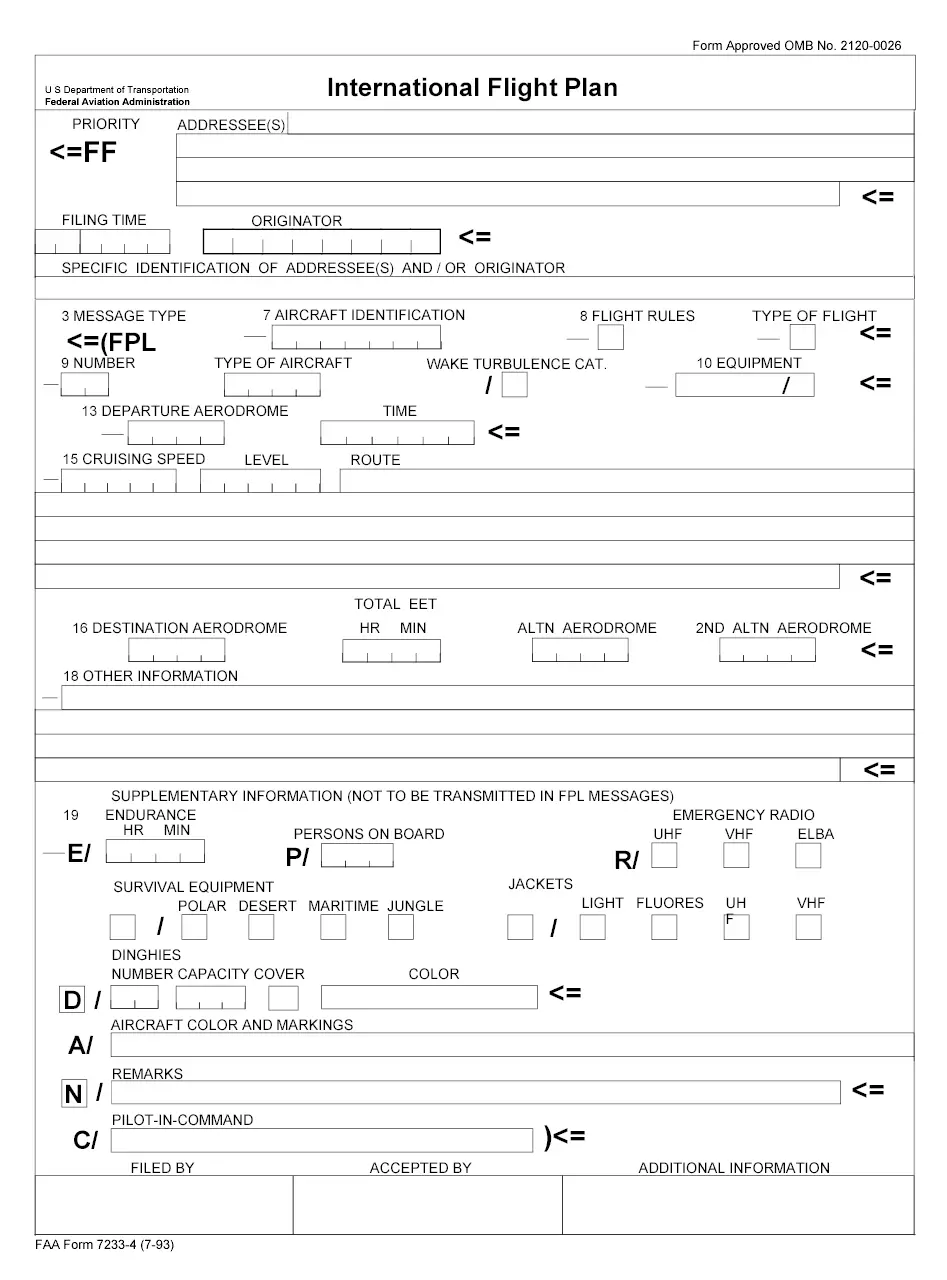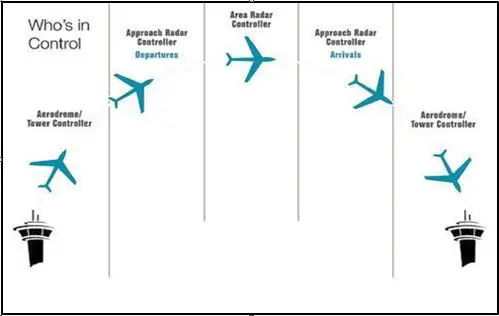Air Traffic Control, as most of us understand, is the profession in which controllers provide the separation between aircraft so that they do not collide in the air. However, the task is much more complex than that. The main goal of Air Traffic Control (ATC) is the provision of a ‘safe, orderly, and expeditious flow of air traffic. Besides providing separation between aircraft on the ground and in the air, an ATC also needs to coordinate with units like Air Force, Airport Operator, Fire Services, District Administration etc. for smooth flow of air traffic.
As in a baton relay race, the baton is passed from one runner to the next in order to win the race, in ATC, an aircraft can be thought of as a baton whose control is passed from one ATC unit to the other so that an aircraft can reach its destination safely and with the least delay. The relay starts with the booking of a flight plan and ends when the aircraft switches the engines off at the destination.
ATC comes under the category of Air Traffic Services (ATS). So, to understand ATC, a brief idea of the objectives of ATS is needed. These objectives summarize all the work that is done by ATCOs (Air Traffic Control Officers) all around the world.
The objectives of the air traffic services are to:
- prevent collisions between aircraft;
- prevent collisions between aircraft in the manoeuvring area and obstructions in that area;
- expedite and maintain an orderly flow of air traffic;
- provide advice and information useful for the safe and efficient conduct of flights;
- notify appropriate organizations regarding aircraft in need of search and rescue aid, and assist such organizations as required.
How Air Traffic Control Works
So let’s start unfolding Air Traffic Control step by step –
1. Submission of FPL (Flight Plan)
A flight Plan is a document which carries details about the flight e.g. Registration of the aircraft, Flight level at which she intends to fly, Route to be followed, Date of flight, Equipment carried by aircraft, departure and destination aerodromes (an Airport is known as an aerodrome in ATC language) etc. A sample Flight Plan is attached. In the case of a “controlled” aerodrome, the FPL is filed in the A.T.S. Reporting Office (ARO) at the aerodrome from where the flight is to take off. If it is “uncontrolled” e.g. some helicopter is to take off from some town not served by an aerodrome after an election rally, then the FPL is filed at the nearest controlled aerodrome. Here “controlled aerodrome” means the aerodrome where Air Traffic Services are provided to aircraft.
In the case of a “controlled” aerodrome, the FPL is filed in the A.T.S. Reporting Office (ARO) at the aerodrome from where the flight is to take off. If it is “uncontrolled” e.g. some helicopter is to take off from some town not served by an aerodrome after an election rally, then the FPL is filed at the nearest controlled aerodrome. Here “controlled aerodrome” means the aerodrome where Air Traffic Services are provided to aircraft.
2. Addressing FPL
If FPL(Flight Plan) is filed without any errors, then it is addressed by the ARO to all en-route ATC centres as well as Destination aerodrome so that all of them are well aware in advance to facilitate the aircraft. Once addressing is done, FPL is sent to the Communication section where it is transmitted to all the addressees.
3. Flight Information Centre(FIC) and Air Defence Clearance(ADC) No.
Once a plan is booked then an FIC (Flight Information Centre) number i.e. a unique number is allotted to that particular aircraft flight which signifies the acceptance of the flight plan in the system. If the flight is a scheduled one e.g. Air India’s daily flight between Delhi and Mumbai, then the plan is automatically approved by IAF (Indian Air Force). But in case of a non-scheduled flight (say some special cargo flight to import Delhi Metro’s train coaches) then Air Defence Clearance (ADC) number is requested from IAF, so the plan is forwarded to IAF’s Military Liaison Unit (MLU).
4. Engine Start-up
Once all the formalities regarding the boarding of passengers and cargo are done and the aircraft is ready, then the pilot will request the Air Traffic Control Officer (ATCO) for Push-back and start-up. Push-back means the aircraft will be pushed back from the stand after disconnecting from the aerobridge, using a tow tractor (as the aircraft cannot push back herself). Start-up means permission to start the aircraft engine(s). Once approval is given by ATCO aircraft commences push-back and start-up procedures.
5. Taxi / Ground Control
After push back and engine, the start-up is done, and the aircraft is ready to taxi (which means now she will be moving to the Runway for take-off). The pilot will request route and taxi clearances now. The concerned ATCO issues the route clearance and assesses the situation like how many other aircraft is taxing, which taxiway to be given to the aircraft so that it does not collide with other aircraft or other obstruction on the ground (Remember ATS objective #2?). Usually, a taxi is given up to the Runway holding point.
Runway Holding Position/Point: A point at safe distance from the runway so that aircraft taxing on the ground does not possess a threat to Arriving or Departing aircraft.
6. Take Off / Tower Control
Once the runway is clear and the aircraft is ready for take-off, the Tower controller advises the aircraft to enter the runway, line up and take off. Surface wind information is also passed along with the take-off clearance as it can prove crucial during the initial climb of the aircraft.
7. Approach Control (APP)
Once the aircraft is airborne, the tower controller hands over its control to the next control position known as Approach Control. Approach Controller now issues climb clearance to the aircraft up to a level under its jurisdiction subject to the traffic. Approach control is one of the toughest positions in ATC. It really tests one’s skills to separate aircraft that are climbing or descending within the “limited” jurisdiction and reaction time.
8. Area Control Centre (ACC)
Once the aircraft is about to reach the vertical limit of the jurisdiction of Approach, then it is handed over to the next unit i.e. Area Control Centre. ACC is responsible to climb the aircraft to its final cruising level requested by the aircraft subject to separation standards. If the destination is beyond the lateral jurisdiction of the ACC, the Aircraft is handed over to the next ACC.
9. Approach Control (APP)
When the aircraft is about to reach its destination, it is required to commence its descent. Once the aircraft is about to descend through the levels of vertical jurisdiction of ACC, the control of this particular aircraft is handed over to the destination approach unit. APP will further descend the aircraft and at the same time, it will guide the aircraft to align with the Runway Centre-line.
10. Landing/ Tower Control
Once the aircraft has descended sufficiently and is aligned with the runway centre-line, its control is passed to the destination aerodrome tower controller. The tower controller now issues the landing clearance if the runway is clear. The landing clearance comprises two important things i.e. the runway number/designator on which the aircraft is to land as well as the surface wind.
11. Ground Control
After the aircraft lands, it is asked to vacate the runway and contact the ground controller. The ground controller now issues taxi clearance to the stand where the aircraft will disembark the passengers.
Now, as they say “a picture is worth a thousand words”, I am summarizing the entire ATC process in a single picture:
So this is how the entire Air Traffic Controlling of a single flight is done. It requires immense efforts of “behind the scene heroes” who work 24*7 to ensure that you reach your destination safely. I hope you enjoyed my article.


thank you Sudhir Sheoran, It is a very good article. Please let me know do we have to carry any CV during the interview or only the documents they have mentioned in the interview letter is enough.
Documents mentioned in interview letter
Thankyou so much for these articles written on ATC.It really helped me prepare well for the Interview.I am surely going to recommend this to anyone who aspires for a career in AAI.
Thank you sir this is very important documents for provide us
Thanks for giving brief overview of ATC execution of control.
thanks for the nice write up. if you can elaborate under what rule a pilot has to obtain fIC and ADC number. Any DGCA requirement?
It is a requirement of Indian Air Force for all aircraft flying in Indian airspace. Without a valid ADC flight cannot depart, take-off or transit through Indian airspace. FIC no. is a proof that operator has submitted flight plan which is mandatory to get air traffic services in India
FABULOUS EXPLANATION